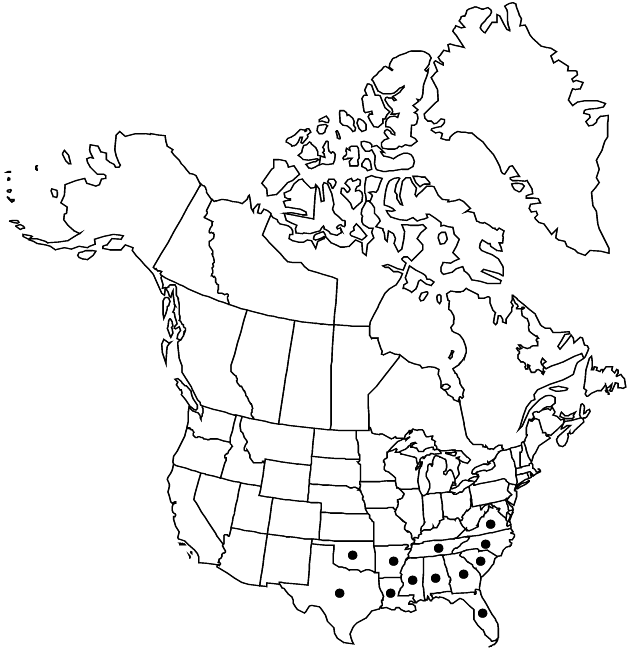Difference between revisions of "Pseudognaphalium helleri"
Opera Bot. 104: 147. 1991.
imported>Volume Importer |
imported>Volume Importer |
||
| Line 61: | Line 61: | ||
|publication year=1991 | |publication year=1991 | ||
|special status=Endemic | |special status=Endemic | ||
| − | |source xml=https:// | + | |source xml=https://bitbucket.org/aafc-mbb/fna-data-curation/src/2e0870ddd59836b60bcf96646a41e87ea5a5943a/coarse_grained_fna_xml/V19-20-21/V19_688.xml |
|tribe=Asteraceae tribe Gnaphalieae | |tribe=Asteraceae tribe Gnaphalieae | ||
|genus=Pseudognaphalium | |genus=Pseudognaphalium | ||
Latest revision as of 19:54, 5 November 2020
Annuals (fragrant), 30–100 cm; fibrous-rooted (roots relatively thick and lignescent). Stems greenish, glandular-villous (without persistent tomentum, stipitate glands mostly 0.3–1 mm, often variable, stalks broadened toward bases, about equaling gland widths). Leaf blades mostly oblong-lanceolate, 2.5–7 cm × 4–20 mm, bases not clasping, not decurrent, margins flat, faces bicolor, abaxial white to gray with lightly persistent tomentum, adaxial green, both minutely stipitate-glandular. Heads in corymbiform arrays. Involucres campanulate, 6–7 mm. Phyllaries in 4–6 series, white (opaque, shiny), ovate to ovate-oblong or oblong, ± tomentose. Pistillate florets 83–107. Bisexual florets 9–15. Cypselae ridged, smooth.
Phenology: Flowering Sep–Oct(–Nov).
Habitat: Dry woods and openings, clay and sandy clay, sand hills
Elevation: 10–300 m
Distribution

Ala., Ark., Fla., Ga., La., Miss., N.C., Okla., S.C., Tenn., Tex., Va.
Discussion
Pseudognaphalium helleri and P. micradenium are similar to P. obtusifolium in most features; both differ in their glandular stems without the persistent whitish tomentum of P. obtusifolium.
Selected References
None.